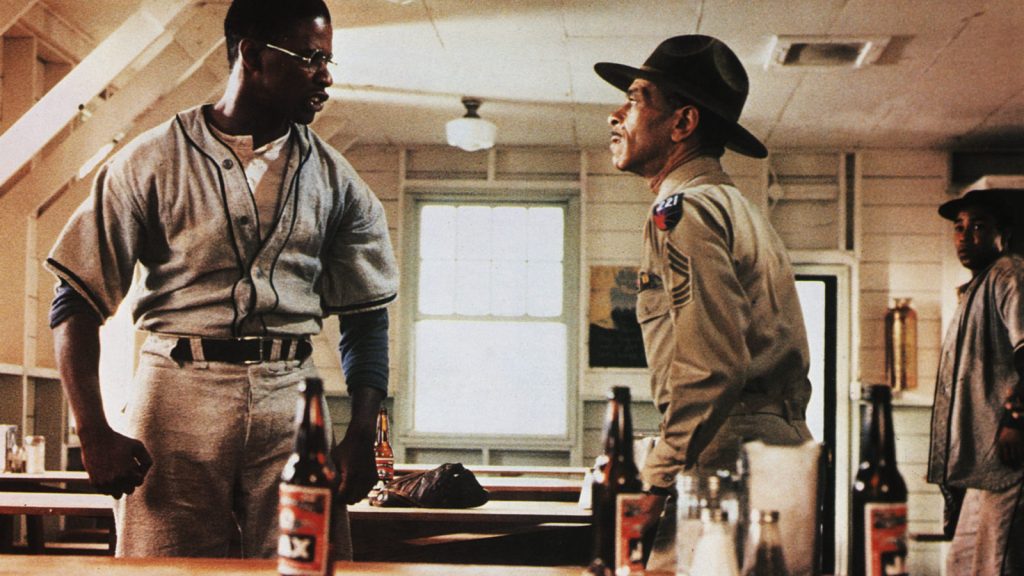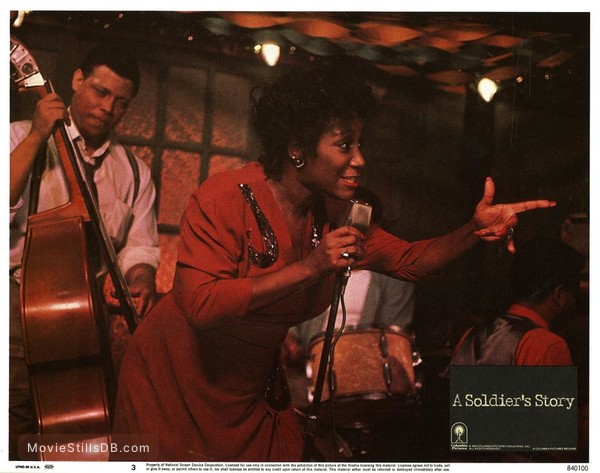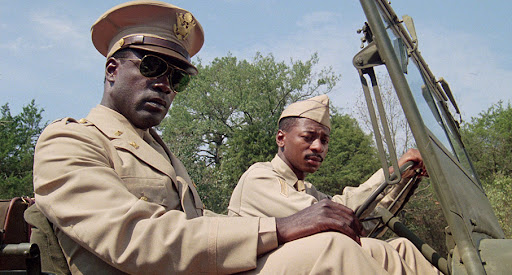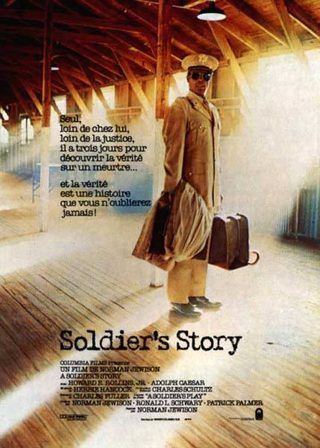
I remember the first time I saw 1984’s ‘A Soldier’s Story’ with my dad. It was on cable, HBO to be exact, and it had to be 1985. My dad got front and center on the couch in front of our floor model wood-encased Magnavox, and I sat cross-legged on the floor next to him, waiting to see what the fuss was about. It seemed like he had been talking about the movie for a year, and I would finally see it with him.
Dad lit up pretty early in the movie when Patti Labelle hit the screen singing. Her character, Big Mary, had powerful vocals as she belted out the blues in a makeshift southern-style juke joint, working the crowd up in a fervor. You would’ve thought my dad was there himself as he hooted and hollered at Miss Patti Patti, showcasing why she is one of the best vocalists of our time. It was then that I understood his fascination with the movie. Big Mary was like kin. So were the other characters in ‘A Solider’s Story.’ They were true, authentic versions of the men and women my dad was around growing up. They were as familiar to him as the Cosby kids were to me.
‘A Soldier’s Story’ was directed by the famed Norman Jewison (‘Fiddler on the Roof,’ ‘Moonstruck’) and was adapted into a movie that was previously called ‘A Solider’s Play.’ Based on a segregated U.S. Army officer training outfit, it starred a Who’s Who of Black actors who were primed and ready for their Hollywood break. Most notably, Denzel Washington, David Allen Grier, Robert Townsend, Howard E. Rollins, and Adolph Ceasar gave stellar performances, and there haven’t been many ensembles this good since. Everyone brought their A-game, and it showed.

It’s a murder mystery set in the segregated South, and we spend the next hour and forty-one minutes trying to figure out who murdered Vernon Waters (Adolph Ceasar), an unliked and despised master sergeant who gave the men hell while kissing up to his white counterparts. Every man in the unit had a reason to kill Waters, so trying to unravel the case was a giant feat for Captain Richard Davenport (Howard E. Rollins). I won’t give it away to those of you who haven’t seen the movie, but once it’s known, you understand why.
[ Read: It’s Time We Give Mahogany Its Flowers ]
My father loved this movie, and after the first time we watched it together, we bonded regularly over the film for years after our initial viewing. For Christmas in 1988, I bought it for him on VHS so we both could watch it anytime we wanted, and I know we must’ve watched it together at least 20 times–maybe more.

I could recite it line by line at one time, and my father could, too. It was our thing to watch together while drinking Pepsi and snacking on Beer Nuts, my dad’s favorite. Each time I watched the movie, I increasingly understood my dad. I got why he worked so hard to give my mother and me a better life than what he had or what his father had. I understood why he came home each day from work exhausted, being the only Black man in his department of programmers and data analysts. I understood why being in the military wasn’t an option for him like it was for so many others because of the racism that was steeped in the culture back then.
Watching ‘A Soldier’s Story’ with my dad brought us closer. It was a bonding experience I will always treasure.
I still watch ‘A Soldier’s Story’ on streaming when I can and occasionally on TCM, where they broadcast it 2-3 times a year, most notably during Black History Month. I can still hear my dad reciting certain lines and singing along with C.J. Memphis, the singing baseball slugger and part of the unit. I wish I had yet another moment to watch it with him, just one more time.








 #birthdaybehavior
#birthdaybehavior
















[…] [Read: A Soldier’s Story- Classic 80s Cinema] […]